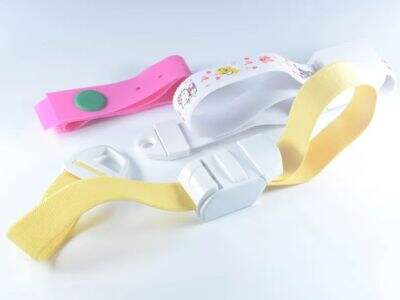How well tourniquets stop insufferable bleeding or released wounds
Tourniquets work really well to stop the blood from flowing out of a very large cut or wound. They do this by pressing the flesh around the part on which you are injured, so the blood cannot escape. This helps stanch the flow of blood, buying time for someone to find help. Tourniquets are especially useful when someone has a very bad injury and is bleeding a great deal. In these scenarios they can be the difference between life and death.
Emergency tourniquets and their life-saving effects
In an emergency, if a person is badly injured and bleeding heavily, a tourniquet can prevent a life-threatening condition. It helps end the bloodshed fast, and that’s a great thing to give a person a better chance at surviving.” Tourniquets are used by first responders like doctors, nurses and paramedics to assist people who have been injured in accidents or other emergencies. With the right training on how to use a tourniquet, they can be used to help save lives and maintain safety, they said.
Location and method of application of a tourniquet applied for maximum hemorrhage control
A tourniquet must be placed correctly on the body when one is used. This is what’s known as proper tourniquet placement. It should be placed higher up, closer to the body, but not too close to the body’s joints. The tourniquet must be applied tightly enough to stop the bleeding, but not so tight that it causes further damage. Proper technique is also critical when using a tourniquet. First responders can control the hemorrhage and make a difference for the injured person by following the proper steps.
Time sensitivity and proper training on the use of tourniquets
Time is of the essence when someone has lost a lot of blood. A tourniquet applied right away can save their life. That’s why it’s so important for first responders to be well-trained. They must learn how to correctly apply a tourniquet. By training and mastering the right techniques, they can be ready to assist in emergencies and administer the best care to those who are hurt.
An Essential First Responder Tool for Traumatic Bleeding Situations
Tourniquets are a critical tool for first responders during events of traumatic bleeding. They can help prevent the bleeding from getting worse — which increases the person’s chance of survival. With the ability to have tourniquets on site and the knowledge of how to use them correctly, first responders can arrive prepared and be able to offer emergency care that will best help these individuals. Tourniquets are an essential part of DS team gear they use to help keep people safe and healthy in times of crisis.
Table of Contents
- How well tourniquets stop insufferable bleeding or released wounds
- Emergency tourniquets and their life-saving effects
- Location and method of application of a tourniquet applied for maximum hemorrhage control
- Time sensitivity and proper training on the use of tourniquets
- An Essential First Responder Tool for Traumatic Bleeding Situations

 EN
EN
 AR
AR
 BG
BG
 HR
HR
 CS
CS
 DA
DA
 NL
NL
 FI
FI
 FR
FR
 DE
DE
 EL
EL
 HI
HI
 IT
IT
 JA
JA
 KO
KO
 NO
NO
 PL
PL
 PT
PT
 RO
RO
 RU
RU
 ES
ES
 SV
SV
 CA
CA
 TL
TL
 IW
IW
 ID
ID
 LV
LV
 LT
LT
 SR
SR
 SK
SK
 SL
SL
 UK
UK
 VI
VI
 SQ
SQ
 ET
ET
 GL
GL
 HU
HU
 MT
MT
 TH
TH
 TR
TR

